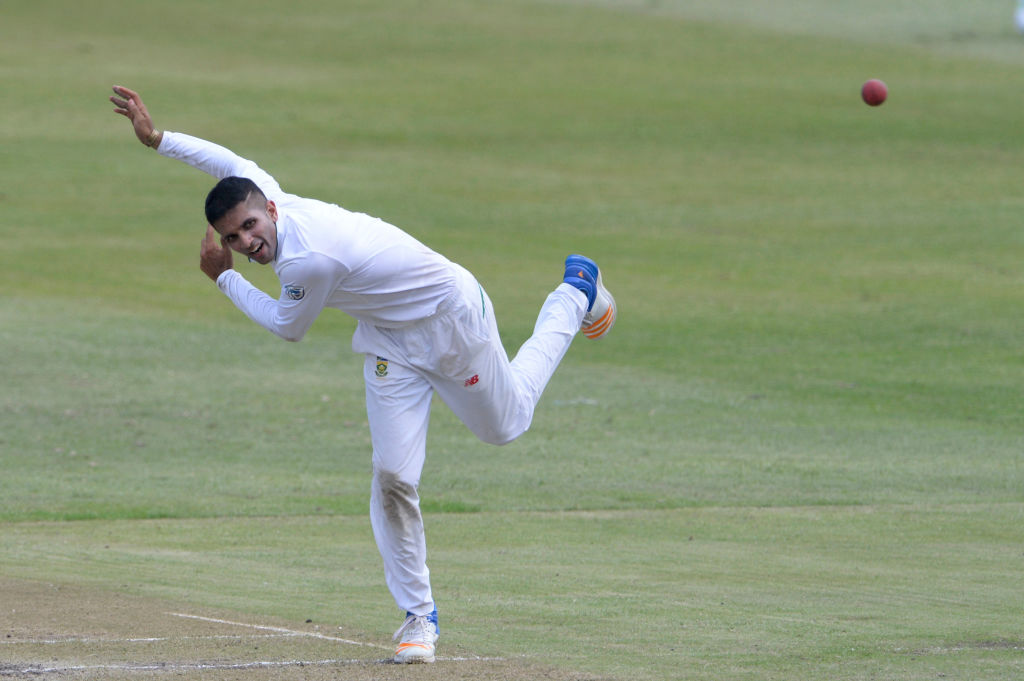Keshav Maharaj failure points fingers at South Africa’s lack of planning for long-term results
If 2015 South Africa series was the symbolic beginning of a new era in Indian cricket - one of dominance and establishing a different identity - then 2016-17 season brought many a house down in an ultra-dominating fashion that many had only envisioned but seldom secured.

It was during the 2016-17 season that India warned the world of one thing - winning here is no more a lottery. You might give your all but what we can pester for you is going to be the calling card - on flat Indian wickets, pacers were out of the equation, and a streak of wins was built by batsmen and, no prize for guessing, the spinning duo of Ravichandran Ashwin and Ravindra Jadeja.
As India returned to play a home Test series, the memories of the last four years were bound to get a free flashback. During the moment of weakness, South Africa must have been reminded about the horrors of 2015 and how they couldn’t recover from that series loss for a period of time. If the first day’s game today at the Dr. Y. S. Rajasekhara Reddy ACA–VDCA Cricket Stadium in Vizag had anything to do with that flashback, hey, don’t worry, because the pitches are not doctored to such an extent that it would make the game a lottery nor do Dean Elgar and Imran Tahir are bowling to give India any jitters. It was the pure contrast that was on the play, but unfortunately for the Saffers, another ghost has come to increase their sub-continent frailties.
Keshav Maharaj came to India with a lot of promise, with the reputation of the best South Africa spinner since readmission being firmly on his back, and although he has been massively underrated for his efforts in the conditions that don’t support spin-bowling, his 23 overs cost 66 runs today, without any visible amount of contribution to the pace-bowling unit. Does this tell you something about overseas spinners in general?
Well, looking at the history, this shouldn’t surprise many. Shane Warne shone through in the unfavourable conditions in Australia but suffered the worst in India. Muttiah Muralitharan did some historic damage at home - not too different from the Indian home conditions of yore - and in India, he had no real impact. Moeen Ali’s exploits against India in England in 2014 is well documented, but the fate that he had to suffer in the 2016 return series is there for everyone to see.
Simple theory is that a good spinner is not always going to be great in favourable conditions, because much of spin bowling is down to practice as much as it is about raw skill. The question arises is have South Africa done enough to make Maharaj prepare for the sojourn, especially for the ongoing tour in India where his skills were the primary calling card for the Proteas? In their last home series against Sri Lanka, South Africa went ahead with a revenge mindset and dished out pacy and bouncy conditions against the Lankans, as has been their wont despite knowing clearly that their next Test match would be in India and they need to prepare for it?
With a Sri Lanka kind of approach, South Africa ensured they have been behind the eight ball much before the first ball was bowled today. Sri Lanka’s made-to-order pitches at home never needed them fielding more than one pacer and as a result, Kasun Rajitha and Lahiru Kumara, who had starred in a Test win in Barbados last year, didn't play a Test again until December when their next away tour came along. Understandably, they were rusty against New Zealand and had no added skills to their bowling. Suranga Lakmal was bowling as well as he has ever done in his career but one guy can’t win you matches in Test cricket, and Lakmal surely couldn’t.
Maharaj, playing mostly at home, had the luxury of the relentless pressure being exerted by Vernon Philander, Kagiso Rabada, and at times, Dale Steyn and Duanne Olivier, from the other end, and when batsmen tried to cut loose against him, he added wickets to his name. Bereft of that comfort in India, Maharaj seemed completely out of depth and by feeding a scourge of half-volleys, he could do nothing really imaginative to bail the team out of the woods.
Here lies another South African problem, much deliberated, but never discussed to bring about any changes. They were so dependent on Maharaj’s possible success that he was the only bowler from the other end for the major part of the game, with Dane Piedt and Senuran Muthusamy rolling their arms over, as if they were entrusted with the responsibility of holding one end up, and didn’t have anything else to go their way.
India’s top-seven are comprised of right-handed batsmen and it is not until Ravindra Jadeja, there was any trace of a left-handed batsman, which means the left-arm spin of Dean Elgar could have been trusted with. Turning the ball away from the right-handers is always an attacking option in Test cricket but Faf du Plessis had miserably failed to use his resources in the correct fashion.
If anything, du Plessis’ look at the toss can summarize the entire day’s play in a nutshell. As the coil fell on the “head” side after he called tails, there was a clear sense of resignation on his face. After all, it was his eighth consecutive toss loss in Asia, and hey, this might sound harsh, you can’t really win a game without winning the toss here. Indian cricket team will vouch for it, and as Rohit Sharma-Mayank Agarwal partnership suggested, there is an amount of truth to it, too.

Comments
Sign up or log in to your account to leave comments and reactions
0 Comments